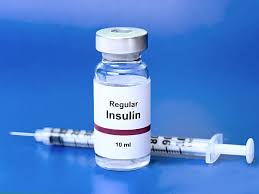NATIONAL HEALTH REPORT FINDS OBESITY REACHES NEW HIGH IN US.
sunoaksdental • December 28, 2018
By Laura Kelly
- The Washington Times - Thursday, December 13, 2018
Obesity in the U.S. has reached a new high with a 5 percent increase since last year, according to a report published Wednesday ranking the healthiest states in the country.
About 31.3 percent of U.S. adults are obese, up from 29.9 percent last year, according to the United Health Foundation’s
annual report.
“That’s incredibly concerning to us as a nation that this trend is going in the wrong direction instead of improving,” said Dr. Rhonda Randall, an adviser on the report. “This is something that is very much an opportunity to us — as individuals, as communities, at a state level and at a national level — to turn it around.”
The annual report documents 35 measures to rank the country’s healthiest states, focusing on individual behavior, public policy, community and environment, and access to medical care.
Hawaii is ranked as the healthiest state this year, with a low prevalence of obesity, smoking, depression and air pollution. The Aloha State also counts a high number of primary care doctors. However, 21 percent of adult Hawaiians — compared with the national average of 19 percent — overindulge in alcohol.

September 26, 2016 -- People with insulin resistance are more likely to have severe periodontitis than people without insulin resistance, according a new study. The authors found that insulin resistance can be considered a risk factor for periodontal disease, even for people with a normal weight. Researchers from South Korea and the U.S. studied the health records of nearly 6,000 South Koreans to see if insulin resistance corresponded to the severity of periodontal disease. They also looked for associations between periodontitis and type 2 diabetes, as well as obesity. "We hypothesized that insulin resistance aggravates the severity of periodontitis. Moreover, the associations between severe periodontitis and insulin resistance in nonobese adults with normal body mass index (BMI) or waist circumference were evaluated using representative national data," wrote the authors, led by In-Seok Song, DDS, PhD, from the department of oral and maxillofacial surgery at Korea University Anam Hospital ( Journal of Clinical Endocrinology & Metabolism , September 6, 2016). Linking perio disease, weight, and insulin resistance Insulin resistance occurs when cells don't properly respond to insulin, which is required to digest food. Previous studies have indicated an association between insulin resistance and periodontitis, which the researchers wanted to further explore, while also accounting for body weight. “This is the first report to demonstrate a significant relationship between insulin resistance and severe periodontitis in individuals with normal weight.” — Lead author In-Seok Song, DDS, PhD, and colleagues The international team of researchers used data from the 2008-2010 Korea National Health and Nutrition Examination Survey. In their analysis, they included 5,690 participants, all at least 30 years of age or older, who had moderate to severe periodontal disease, according to the Community Periodontal Index. Nearly 4,500 participants had moderate periodontitis, with pockets of 3.5 to 5.5 mm, while 1,202 had severe periodontitis, with pockets of 5.5 mm or greater. The researchers also looked at participants' Homeostatic Model Assessment of Insulin Resistance (HOMA-IR) scores, which quantifies a person's insulin resistance by multiplying their fasting insulin levels and fasting glucose levels. For this study, a man with a HOMA-IR score of 2.21 or higher was considered insulin-resistant, also known as metabolically obese. A woman was considered insulin-resistant if her score was 2.33 or higher. Anyone previously diagnosed with type 2 diabetes also was considered insulin-resistant. Overall, participants with severe periodontitis had significantly higher insulin-resistance values than those with moderate periodontal disease. Insulin-resistance valuesModerate periodontitis Severe periodontitis p- (n = 4,488) (n = 1,202) value HOMA-IR 2.182.33 0.0028 score After adjusting for weight, insulin-resistant participants with a normal weight also had significantly higher odds of having severe periodontitis than participants with a normal weight who were not insulin-resistant. The researchers also found people with type 2 diabetes were more likely to have severe periodontitis compared with the groups with normal glucose tolerance and impaired fasting glucose, a type of prediabetes.

Parents who wonder if dental sealants make a difference or not when it comes to protecting their kids from cavities will be glad to know they do reduce tooth damage, a new report shows. Federal health officials are encouraging more parents, health care providers, and schools to help make sure kids get them. Sealants prevent 80 percent of cavities in school-age children, according to a new CDC Vital Signs Report. Dental sealants are protective coatings painted onto the teeth that help keep bacteria out of the nooks and crannies where tooth decay can occur. The findings also show many children are missing out. About 60 percent of children ages 6 to 11 don’t get dental sealants, and kids who don’t have them get almost three times as many cavities. In a press conference today, CDC officials said more health care providers, school administrators and parents need to be aware of the benefits of the procedure. Dental sealants are generally painted onto a child’s back teeth, where cavities are most likely to develop, said Dr. Mary Hayes, a pediatric dentist in Chicago and a spokesperson for the American Dental Association. “Sealant is a resin material that infiltrates the area where the grooves of the teeth are. There are many bacteria in the mouth and they will get into those grooves and produce acid and you’ll get tooth damage. The sealant blocks bacteria from getting into those areas. This resin material diminishes or prevents a spot where decay would normally form,” said Hayes. She recommends sealants be used at about age 6 and then again around age 12 when adult molars come in. The treatment generally lasts from four to eight years. Temperature and the way a child chews, as well as what they eat, can affect the lifespan of a sealant. “Nothing we put in the mouth is perfect – hot chocolate and coffee and ice. And the pressure of our bite is pretty intense. You can get a micro-crack in a tooth, much less a sealant,” said Hayes. Some parents are wary of sealants, though, because they contain BPA , or bisphenol A. BPA is an industrial chemical used to make some plastics and resins used in many types of products, including food packaging . It’s been around since the 1960s. Some research shows BPA can seep into food or beverages from containers made with the material, and exposure to the chemical has been linked to possible health concerns in the brain, behavior and the prostate gland of fetuses, infants and children, according to Mayo Clinic experts. Other research suggests a possible link between BPA and increased blood pressure. But the Food and Drug Administration says it is safe at very low levels. Hayes said dental sealants have very small amounts of BPA compared to other common exposures. BPA levels in sealants were at one time higher. “We use materials now where conceivably there is some BPA in them but it is minuscule and has been measured at .001 percent. For the average 6-year-old, 96 percent of their exposure to BPA comes from food and drinks, and the rest is from dust and air and paper receipts,” among other sources, she said. Other reasons some parents skip getting sealants for their children include the cost or lack of insurance , or the inconvenience and time it takes to visit a dentist, said Hayes. But the new report suggests it’s time and money well spent, she said. © 2016 CBS Interactive Inc. All Rights Reserved.








